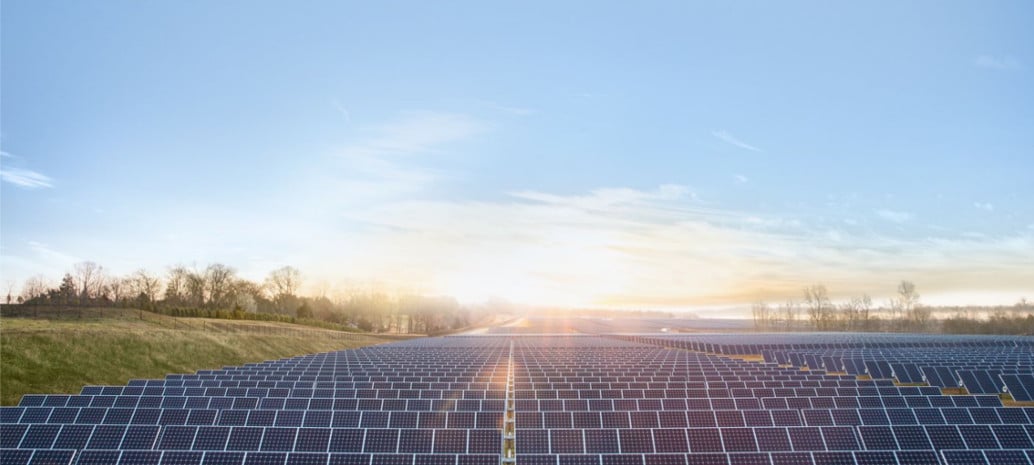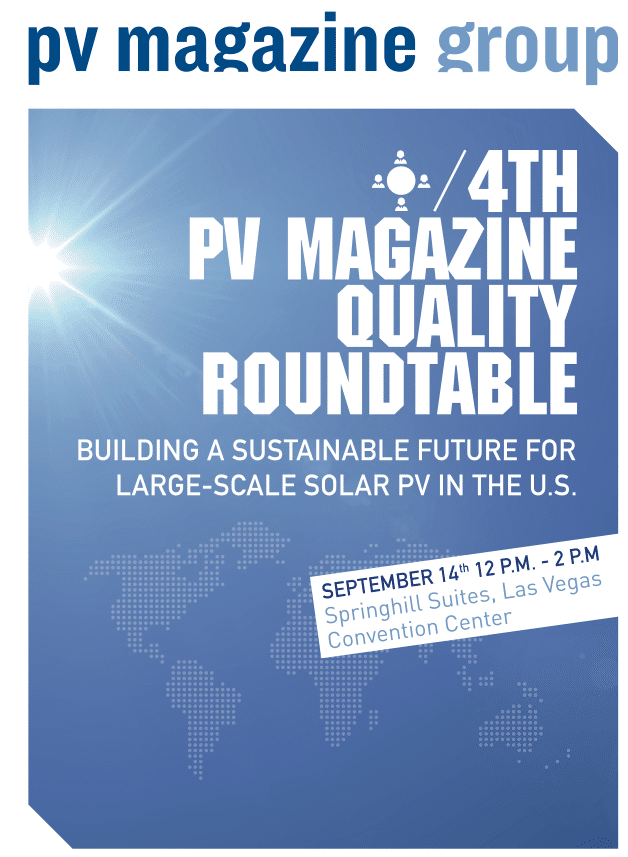pv magazine: DuPont manufactures a wide range of products that end up in PV modules. Can you give us a brief overview of your company’s different product lines for PV?
Olsen: Our two anchor products are the silver metalization paste, that goes on the cell, that helps us pull the electricity out and drive energy from the heart of the solar module, that is known as our Solamex line of paste.
And the other product is our backsheet: our polyvinylfluoride or Tedlar backsheets. Which as the name implies, goes on the back of the module and protects the module over its lifetime value in the field. There are other products that DuPont has had in the marketplace under the engineered plastics, that go into some of the other parts of the system, encapsulants of the module as well. But by far the two main products are the Solamet paste and the Tedlar backsheet.
Interested in discussing the question raised?
Come to our roundtable at SPI in Las Vegas, 12 p.m. to 2 p.m. on September 14.
-> More information
If you have examples of poor quality modules or installations and interesting discussion points – pv magazine would be interested in your story and will treat all submissions with the utmost confidentiality.
-> More information
To register for free, email us at:
-> roundtable@pv-magazine.com
pv magazine: DuPont has had a special focus on quality and reliability in recent years. Do the current record low module and PPA prices present a danger to quality?
Olsen: We want to help the industry to not repeat history. In the past, there were periods in the history of solar where unproven materials were used and we are starting to see some of the results of that today.
As the market has some headwinds in the next couple of quarters, and prices continue to go down and over supply continues to exhibit, there is an opportunity to turn away from quality, and to sacrifice quality in favor of price. And we think now more than ever in that environment one needs to pay attention to quality, because it is going to cost more in the end.
We are seeing more failures of quality issues, and those can happen in modules put in the field five or six years ago. and we are starting to see that, our aspiration, not just for DuPoint but for the industry, is that we continue to focus on the health of the industry even if there are headwinds or cost pressures in there, so that the industry continues to grow in a healthy manner and we earn the confidence of the public that is counting on solar and governments who are putting together various mechanisms to help subsidize solar.
Gambogi: The only thing I would add to what Bob said is that back in the 80’s the Jet Propulsion Laboratory did extensive testing on what materials are appropriate for long-term durability of modules, and they identified Tedlar as the appropriate material for the backsheet, for the outer layer of the module. And I think as the cost pressures have now forced people to look at alternate materials, non-field proven materials, that coupled with the lack of good test methodology has led to some bad choices in materials.
pv magazine: Now that we have discussed backsheets, what other components of pv modules are most prone to failure, and where quality of materials is most essential?
Gambogi: Our field module program has been running for several years, as a global activity looking at more than 70 installations in North America, Europe and Asia-Pacific. And when we look at visual defects, we see about 24% coming from cells, 9% coming from backsheets and 4% coming from encapsulants. From a materials standpoint, those are the ones that jump out as having reliability issues.
-> “Poor quality planning: Shifting the blame, passing the buck”
-> “Melting backsheets, broken cells, and hotspots”
-> “Burnt out, incompatible connectors”
Further Roundtable material:
-> Interview with George Touloupas, Director of Technology and Quality at CEA
“Minor differences in yield percentage make the difference between good and bad investment”
pv magazine: Can you tell me about DuPont’s Reliability Initiative and sequential testing initiatives?
Olsen: We are talking about two things along the way. To not repeat some of the issues that we have seen with quality, that are now starting to appear, we are trying to educate the markets either to use better materials, or to use better testing standards to really get a better handle on how materials, and how the module is going to perform over its life, not just on the first day.
Historically there are standards in place that gauge quality and performance on day one, which is OK to start, but this is not a predictor of how that module is going to hold up over time. Better standards that are oriented to real field conditions are what is going to help long-term performance in this industry overall. I’ll let Bill talk a little about the nature of those tests, and how they differentiate the read on quality in the marketplace.
Gambogi: Thanks Bob. When we started all this work, a lot of module manufacturers were doing testing that basically revolved around the IEC standards – the standards to that you need to meet to sell a module. And those standards are based on identifying short-term failures – what we might call infant mortality. So they are failures that might occur early in the life of a PV module.
But they don’t really address long-term durability. One approach was to look at longer exposures of those stresses to determine long-term durability, but that isn’t a very effective way.
The more effective way is to look at multiple stress testing, to try to recreate some of the stresses that are seen in the outdoor environment, including UV, thermal cycling, and damp heat – high temperature and humidity – and combining those stresses and weather exposures in order to recreate the kind of stress patterns that one sees in the outdoor environment.
So we moved from an IEC qualification-type standard to looking at sequential-type exposures of different stresses, and trying to match that up to what we see in the field. To get back to our field module program, to see what kind of things we see in the field, like cracking, particularly around backsheets yellowing, de-lamination, and trying to relate that to sequential-type exposures in the lab.
pv magazine: Anything we haven’t talked about?
Olsen: We touched on it in the beginning, it is a now more than ever mindset. As we head into a couple of quarters, where there is an accelerated pressure on pricing, there is oversupply, now is not the time to take our eye off the quality ball, and focus on lifetime value and lifetime cost, not just day one cost.
Please share your thoughts with pv magazine at roundtable@pv-magazine.com
Building a Sustainable Future for Large-Scale Solar PV in the U.S.
- 12 p.m. to 2 p.m. on September 14, 2016 during SPI in Las Vegas
- Springhill Suites at Las Vegas Convention Center
- Register at no cost at: roundtable( at )pv-magazine.com
- Target audience: Asset managers, EPCs, operations & maintenance suppliers (O&M), system designers and independent engineers, financial institutions, insurance companies, investors, system owners (utilities, gencos, IPPs, as well as C & I system owners), certification and testing bodies, research institutes and universities, industry associations, government entities, codes & standards and regulatory agencies.
- MCs: pv magazine
- More information
| Initiative sponsor partner: | Gold sponsor: | Gold sponsor: |
 |  | |
| Supported by: | Supported by: | |
 |
This content is protected by copyright and may not be reused. If you want to cooperate with us and would like to reuse some of our content, please contact: editors@pv-magazine.com.










By submitting this form you agree to pv magazine using your data for the purposes of publishing your comment.
Your personal data will only be disclosed or otherwise transmitted to third parties for the purposes of spam filtering or if this is necessary for technical maintenance of the website. Any other transfer to third parties will not take place unless this is justified on the basis of applicable data protection regulations or if pv magazine is legally obliged to do so.
You may revoke this consent at any time with effect for the future, in which case your personal data will be deleted immediately. Otherwise, your data will be deleted if pv magazine has processed your request or the purpose of data storage is fulfilled.
Further information on data privacy can be found in our Data Protection Policy.